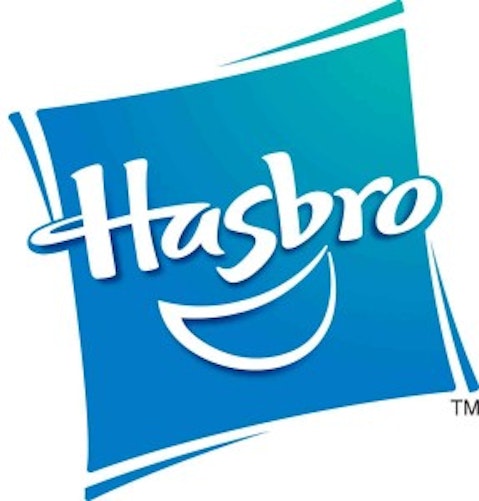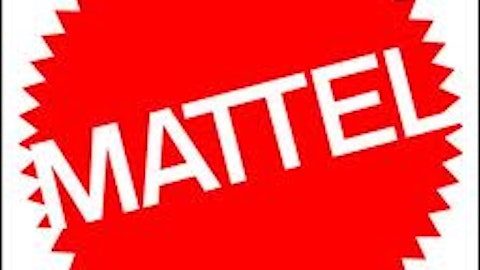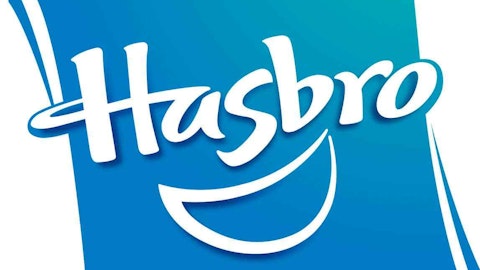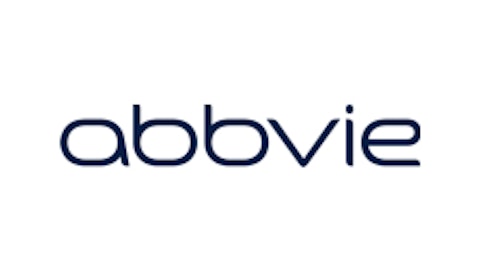
Hasbro, Inc. (NASDAQ:HAS) seems to be making all the right moves in order to position itself for future growth. The toy industry is changing and there is a greater emphasis on digital. So let’s take a look at the deals Hasbro, Inc. (NASDAQ:HAS) has made and whether it is likely to present a good investment opportunity.
Strategic aggression
Hasbro, Inc. (NASDAQ:HAS) has made two key deals with Disney. One is a two-year pact where Hasbro will pay $85 million to Disney for the rights to design and sell Marvel character toys (Disney bought Marvel in 2009).
Perhaps even bigger news is that Hasbro, Inc. (NASDAQ:HAS) paid Disney $225 million for the rights to design and sell Star Wars toys. The first installment in the next Star Wars trilogy is set to be released in 2015, and the Hasbro/Disney deal will conclude in 2020.
You may have known about the next Star Wars trilogy, but you might not have known that an Angry Birds movie will be released on July 1, 2016. Hasbro, Inc. (NASDAQ:HAS) made another strategic move, forming a deal with Rovio Entertainment for the rights to design and sell Angry Birds toys.
Hasbro, Inc. (NASDAQ:HAS) has also been aggressively increasing its mobile gaming exposure. It now owns a 70% stake in Backflip Studios, which has seen more than 300 million game downloads. Popular Backflip Studios games include DragonVale, NinJump, Paper Toss, Ragdoll Blaster, and Army of Darkness Defense.
Furthermore, Hasbro has a four-year deal with Electronic Arts, in which Electronic Arts will develop mobile versions of Hasbro’s most popular games, including Monopoly, Life, Battleship, Scrabble, and Risk.
And Hasbro has partnered with Zynga. These moves won’t only lead to increased brand exposure domestically, but internationally as well.
Hasbro saw a small revenue increase in 2012 from 2011. However, the company is making all the right moves to boost its top-line growth going forward. Hasbro’s net margin of 8.01% is solid, but its debt-to-equity ratio of 1.09 is mediocre at best. Hasbro currently yields 3.40% and the dividend appears to be safe for now. The biggest threat to the company isn’t competition, but the macroeconomic environment.
Related options
Mattel, Inc. (NASDAQ:MAT)’s Barbie brand has been in decline, but American Girl has picked up the slack. Mattel also owns other well-known brands, such as Hot Wheels and Fisher-Price. Mattel, Inc. (NASDAQ:MAT)’s strong brand exposure has led it to being a market share leader.
In addition, Mattel, Inc. (NASDAQ:MAT) has been able to grow its dividend and it recently increased its share buyback program by $500 million. However, while international sales increased 4% in the second quarter, domestic sales declined 4%. The domestic market is mature, which is why Hasbro’s moves into digital are highly strategic.
Mattel, Inc. (NASDAQ:MAT) is likely to remain the market leader, but Hasbro has the potential to steal share over the next several years.
LeapFrog Enterprises, Inc. (NYSE:LF) is well known for its high-quality products. And after a very weak 2008 and 2009, it looks as though a successful turnaround has taken place. Revenue and earnings have consistently improved, in fact sales increased 16% in the second quarter. LeapFrog Enterprises, Inc. (NYSE:LF) has no long-term debt to speak of, its net margin is an impressive 16.19%, and the stock is only trading at around 8 times earnings.
However, nearly 25% of the float is short. Shorts might be aware of LeapFrog Enterprises, Inc. (NYSE:LF)’s precipitous decline at the height of The Great Recession, when the stock dropped more than 80%. If the market falters, LeapFrog isn’t likely to hold up well and the shorts want to target companies that are likely to suffer the most. LeapFrog Enterprises, Inc. (NYSE:LF) has also had difficulty delivering profits over the past year, which could signal trouble.
LeapFrog Enterprises, Inc. (NYSE:LF) has targeted a niche, but there is a low barrier to entry for this industry. Competition from larger players could increase at any time, and while it sells quality products, downside risk is high.
Conclusion
Hasbro and Mattel, Inc. (NASDAQ:MAT) have taken different approaches to growing their businesses, but over the long haul, they have largely traded together. Mattel has the lead now, but Hasbro has made several highly strategic decisions that should lead to market share gains.
Both stocks are somewhat resilient to broader market corrections, but since both companies are likely to be long-term winners, any downswings could prove to be opportunities. That said, Hasbro might see more organic growth than Mattel over the next decade, so perhaps your research should start there.
The article Should You Invest in Toys? originally appeared on Fool.com and is written by Dan Moskowitz.
Dan Moskowitz has no position in any stocks mentioned. The Motley Fool recommends Hasbro, LeapFrog Enterprises (NYSE:LF), and Mattel. The Motley Fool owns shares of Hasbro and LeapFrog Enterprises. Dan is a member of The Motley Fool Blog Network — entries represent the personal opinion of the blogger and are not formally edited.
Copyright © 1995 – 2013 The Motley Fool, LLC. All rights reserved. The Motley Fool has a disclosure policy.



